We flew from Halifax to Ottawa, overnight from Ottawa to Frankfurt, and finally from Frankfurt to Bilbao where we landed at 1:00 pm after which we picked up our rental car and headed into the rolling hills of the Basque region.
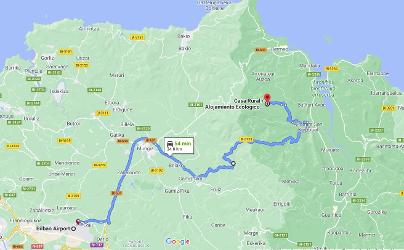
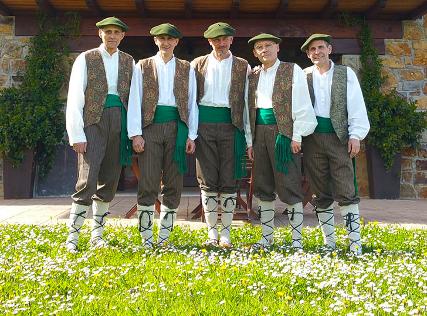
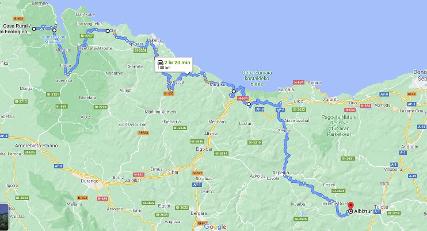
Two of the five Basque owners of Lurdeia.
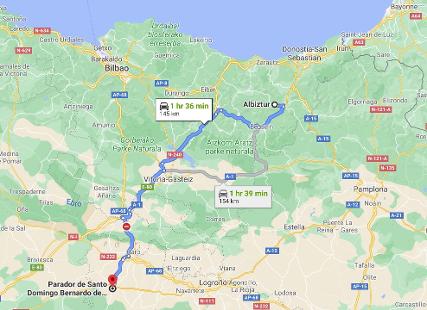
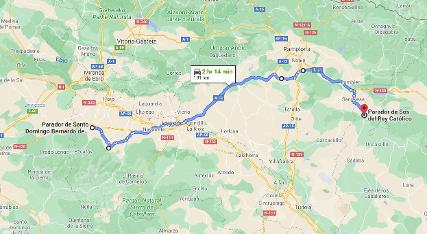
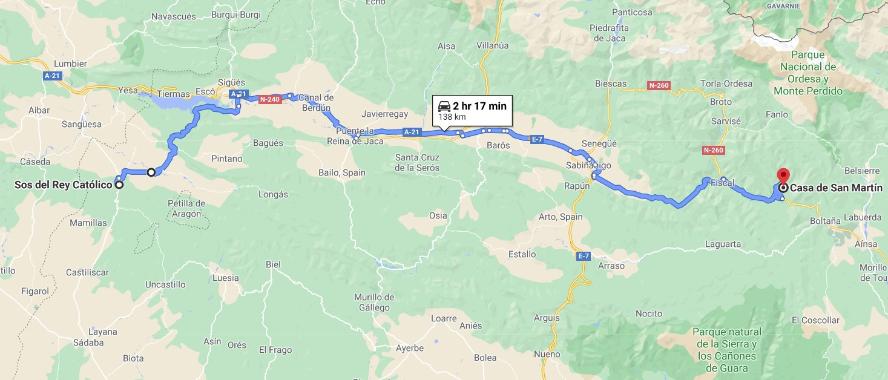
The property of San Martin dates back over 1,000 years, having once belonged to the Abbot of San Victorian, the oldest monastery in Spain. Construction of the current stone building began in the 18th century. In the second half of the twentieth century the property, along with the rest of the valley was abandoned due to expropriation of the surrounding valley for a hydro-electric project that was never to be. However recently it has been lovingly restored to offer all the comforts in an elegant rustic surrounding. The property consists of 92 hectares, surrounded by pine and oak forests. The balconies and terraces are ideal for gazing out at the massive mountains surrounding the property.
Our superior double room named Clavel (carnation in English) was especially well appointed with a nice south-facing balcony that welcomed the afternoon sun.
The old barn serves as the dining room, dominated by a large fireplace. A natural cuisine, using products from the garden as evidenced by the chef bringing in freshly picked leeks focuses on a farm to table philosophy. Regional Somontano wines are available to accompany one's meal. Breakfast is available each morning as is dinner each evening consisting of a starter, a first course, a main course and a dessert. Being somewhat isolated and 'captive' there is an opportunity to overprice the meal. David does exactly the opposite. Give the quality of the dinner the price of 25 euros (drinks excluded of course) is astonishingly reasonable. Very memorable!
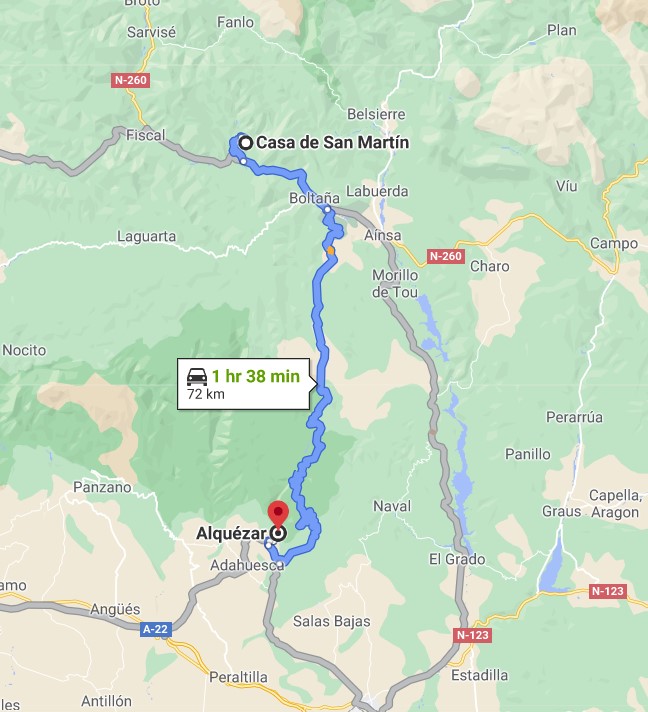
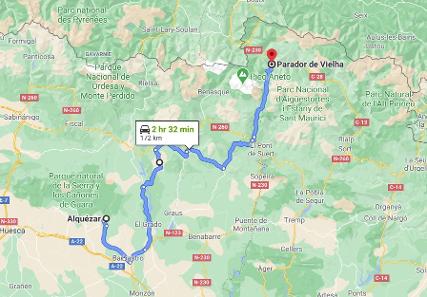
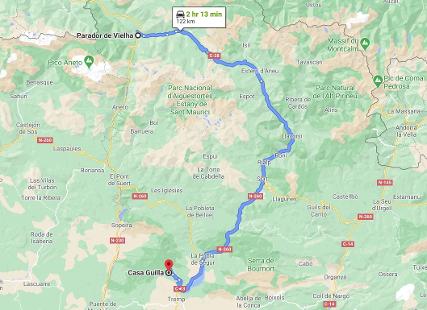
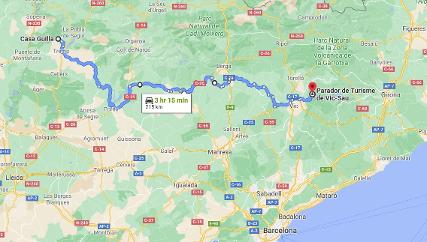
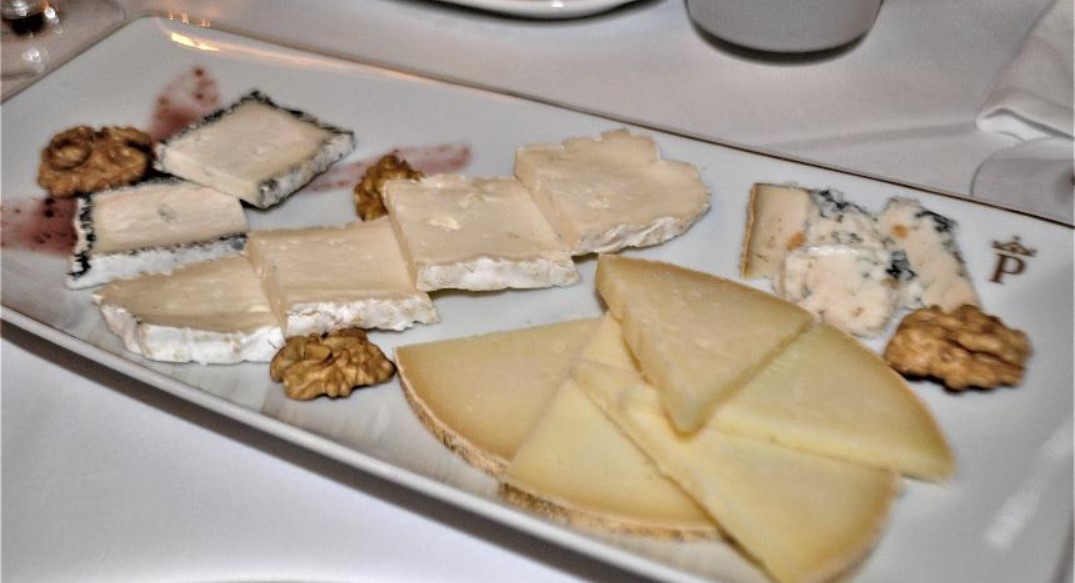
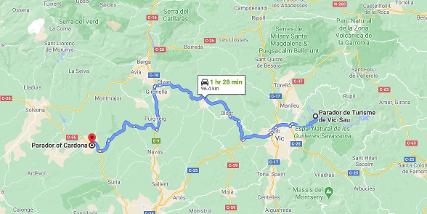
From Vic-Sua we drove west to Cardona where we will be staying two nights at a castle Parador. The hotel is located on a headland in a 9th century fortified enclosure, alongside the 11th century Minyona tower and an 11th century church with characteristic features of the surrounding Catalan Romanesque churches. Below the parador is the River Cardener.
.
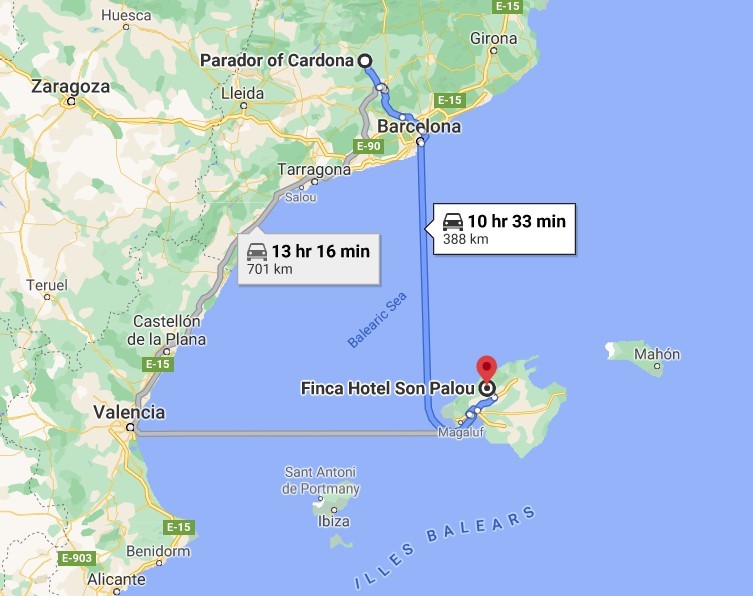
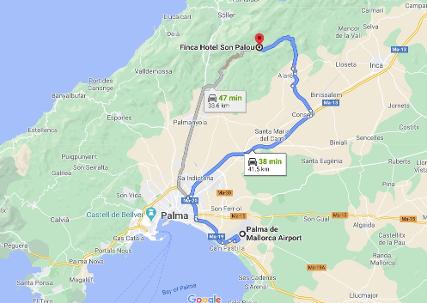
One of the days we drove to the north coast and Cala Tuent and then as far north-east as one can go to Port de Pollenca and the town of Alcudia.
Cala Tuent is accessed by a hairpin-riddled twisting 12 km helter-skelter of a road down to Sa Calobra, described to be one of Mallorca's top experiences. This spectacularly serpentine road is pure drama, carved through the rock and skirting narrow ridges as it unfurls to the coast. Built in 1932 its twists and turns apparently inspired by tying a tie, some say, explaining the section of road that turns round before threading under itself. The views of the beach and the deep blue water are memorable. Eventually one arrives at a beautiful 100 meres long natural beach inside a lovely cove surrounded by the Tramuntana mountains and Majorca's highest mountain, Puig Major at 1,445 metres. The sand is mixed with gravel and pebbles with the cove being perfect for a swim.
Orient from the approach from the east (from Alaro). The village square.
___________________________________
Below are photos of some of our dishes but here are the those we ordered
September 22
Tomato Coco (Majorcan pizza) with Miso and cheese sauce - 10.90 euros
Gazpacho with four fittings (mozzarella, tomato, cucumber and avocado sorbet) - 10.90 euros
Pork loin with cabbage (Majorcan style) - 19.30 euros
Almond cake - 6.80 euros
Jose L Ferrer Binissalem Crianza 2008 - 1/2 litre - 14.17 euros
September 23
Sangria de vino (red wine, Cointreau and fruits) - 16.50 euros
Cold corn soup with cauliflower mousse - 9.80 euros
Couscous with vegetables - 11.20 euros
Duck breast with raspberry sauce and semoule croquettes - 21.30 euros
Tiramisu - 6.50 euros
Son Artigues Crianza (100% Callet) - 21.05 euros
September 24
Pumpkin cream soup with vanilla and croutons - 10.70 euros
Gratinated goat cheese salad topped with berries and pine nuts - 11.90 euros
Chicken curry with grilled vegetable and saffron rice - 20.40 euros
Melting chocolate cake with vanilla ice cream - 6.80 euros
Son Artigues Crianza (100% Callet) - 21.05 euros
September 25
Paella mixta, with meat and seafood - 19.00 euros
Paella vegetarians - 16.00 euros
Glass of Gran Fueda - 5.80 euros
___________________________________
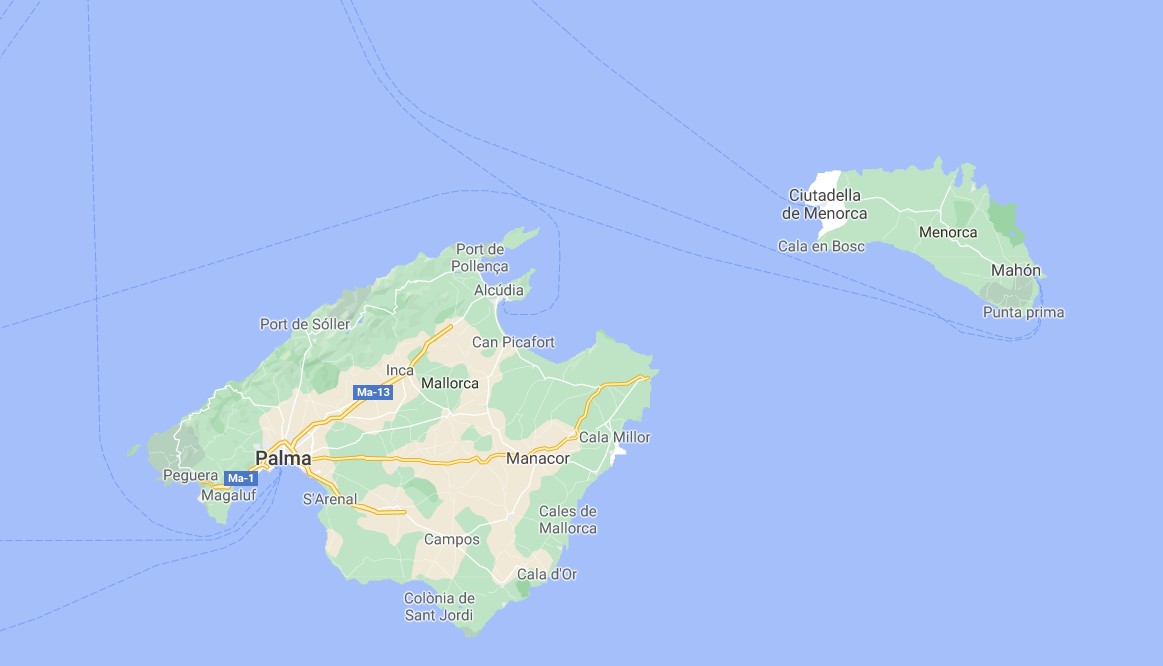
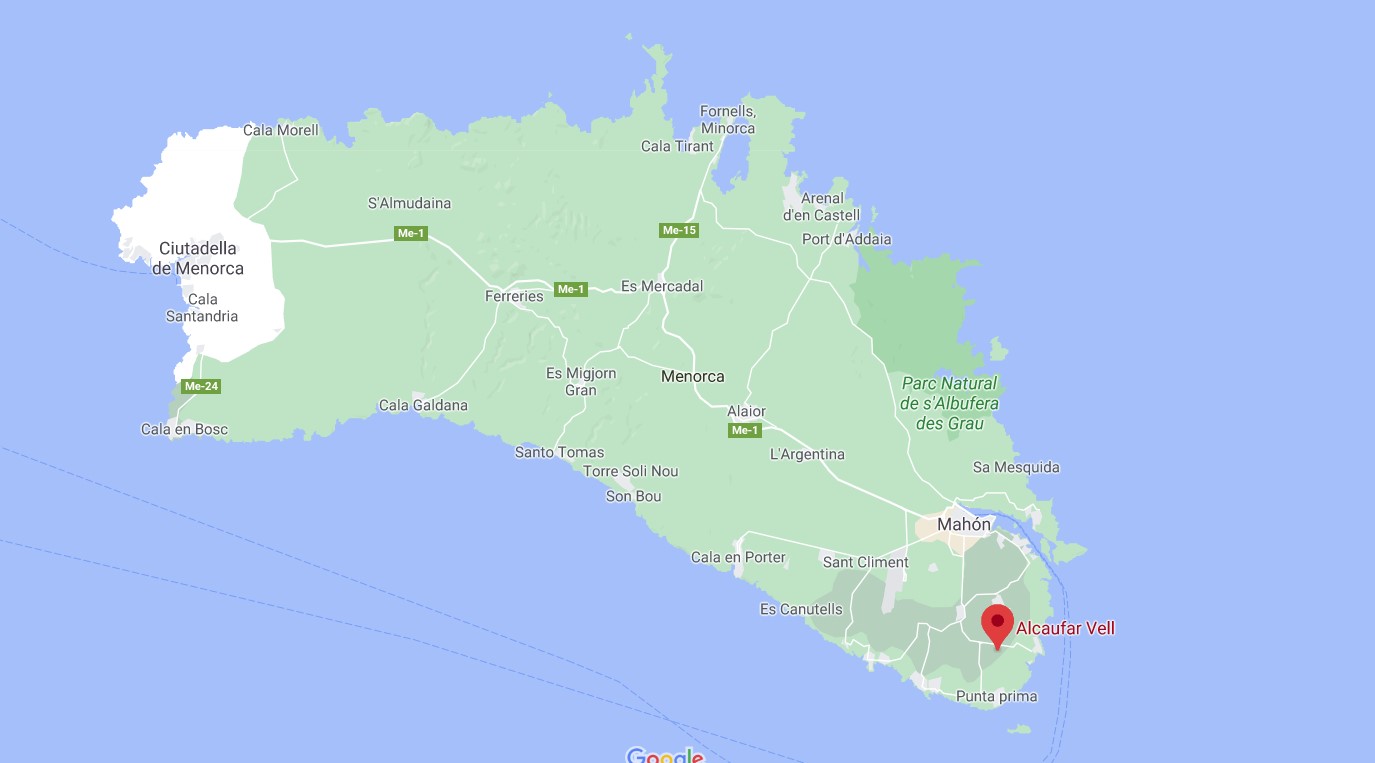
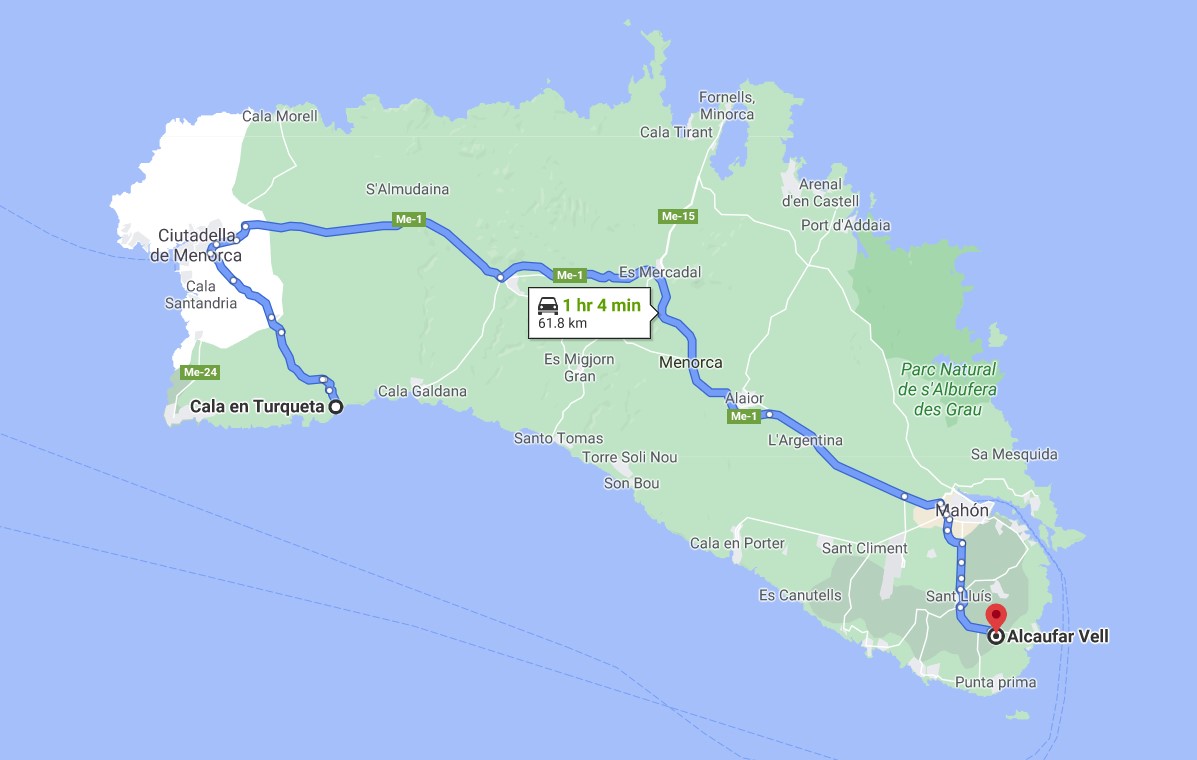
103 euros Hotel Lurdeia Bermeo www.lurdeia.com
170 euros Iriarte Jauregia Abiztur www.iriartejauregia.com
143 euros Parador Santo Domingo Bernardo Santo Domingo de la Calzada www.paradorsantodomingo.com
119 euros Parador Sos del Rey Catolico Sos del Rey Catolico www.paradorsosdelreycatolico.com
162 euros Casa de San Martin Boltana www.casadesanmartin.com
82 euros Villa de Alquezar Alquezar www.villadealquezar.com
166 euros* Parador de Viehla Viehla www.paradordeviehla.com
114 euros Casa Guilla Santa Engracia closed
148 euros Parador de Vic-Sau Vic-Sau www.paradordevicsau.com
143 euros Parador de Cardona Cardona www.paradordecardona.com
198 euros Finca de Son Palou Orient www.sonpalou.com
151 euros Alcaufar Vell Carretera Alcaufar www.alcaufarvell.com
* included dinner
__________________________________________________________________________________________________
Expenses (based on average exchange rate 1 euro = $1.42 Cdn):
We are unable to locate all expense records of the trip (excluding airfare) but do have the amounts paid for lodging which totaled $4,128 (Cdn), or $206, on average, per night. This is even better when one considers the rates include a substantive, usually usually a buffet. The character and quality of our lodgings were everything we expected. Except for perhaps the room in Villa de Alquezar and the suite at Parador de Cardona we could not have been more pleased.
- the Basque men of Hotel Lurdeia
- the beauty of the Basque countryside
- the unique Basque language
- the vibrancy of San Sebastian during the Fiesta
- tapas, including the crunchy baby eels
- Santo Domingo de la Calzada and the beautiful Parador Santo Domingo Bernardo Fresnedo
- the running of the bulls in Sanguesa
- the medieval village of Sos del Rey Catolico
- our lunch at Casa Javier, including the mushroom ice cream - what a find
- Casa de San Martin, including the property, the hospitality of David and the delicious meal
- Turco
- the scenic driving through the Pyrenees, e.g. Casa de San Martin and Parador Viehla
- Casa Guilla perched on the rock outcropping
- the delicious family style dinner prepared by Sandra at Casa Guilla
- the sun rising over the Vic-Sau reservoir
- lunch at Fussimanya with wine poured from a porron
- staying in the very impressive Cardona castle
- Finca Son Palou and its tranquil, rural setting
- enjoying a pitcher of excellent sangria on the expansive lawn of the Finca Son Palou
- all our meals at Finca Son Palou
- the drive down to serpentine road to Cala Tuent on the north coast of Majorca
- the narrow country roads often enclosed by rock walls
- the beautiful beaches of Menorca
- Javier Pedro Gonzalez' flamenco concert followed by a late evening (10:30 pm - 11:45 pm) meal